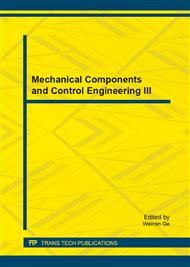p.799
p.803
p.808
p.812
p.818
p.822
p.826
p.830
p.836
Design and Implementation of Colloidal Quantum Dot Field-Effect Transistors
Abstract:
With the breakthrough of mobility in quantum dot electric field transistors (Q-EFTs), the potential application in these functional devices has revealed and been paid more attentions, due to flexibility in design, low cost, facility for processing and large area. One of the most important applications of FETs is the photoconductive detector. However, these functional FETs have less been reported. In this work, colloidal PbS Q-FETs were successfully fabricated by reasonable structure design and layer-by-layer depositon technique PbS quantum-dots. The bipolar property was demonstrated by the output and transfer characteristics, as devices work in I and III quadrants simultaneously. The mobilities of electron and hole are 0.16 cm2/(V⋅s) and 0.28 cm2/(V⋅s), respectively. Q-FETs work as photoconductive detectors at both positive and negative gate bias voltages. Under constant gate bias, photocurrent increase exponentially with the intensity of light. The responding region consisted with the absorption range of PbS quantum dots. A linearity was found in drain voltage and incidence of laser power, the ratio was attributing to 0.0019 (μW⋅V)-1.
Info:
Periodical:
Pages:
818-821
Citation:
Online since:
October 2014
Authors:
Price:
Сopyright:
© 2014 Trans Tech Publications Ltd. All Rights Reserved
Share:
Citation:


